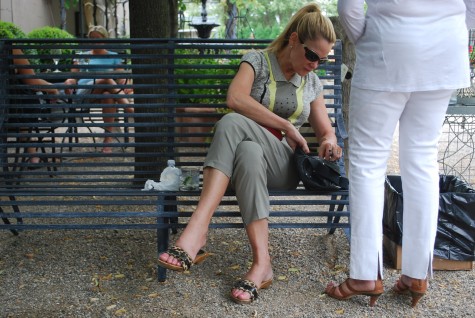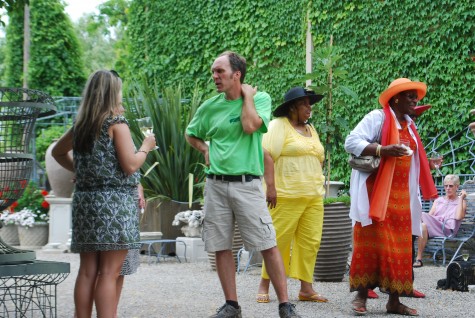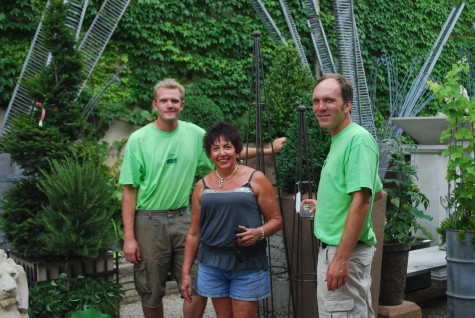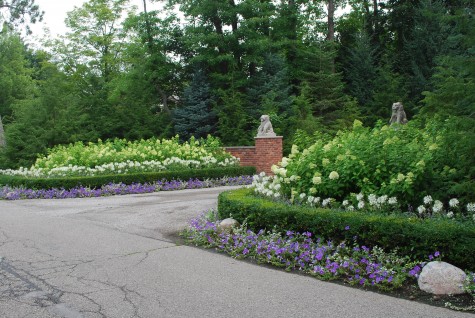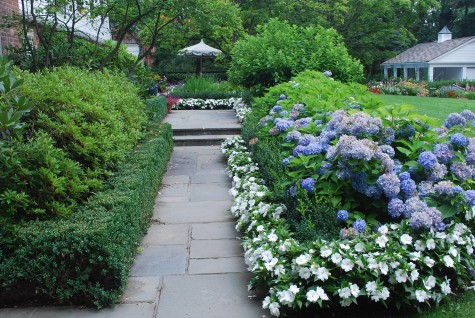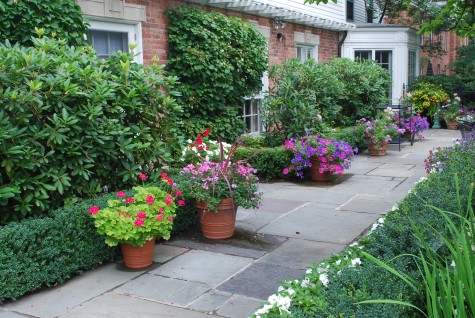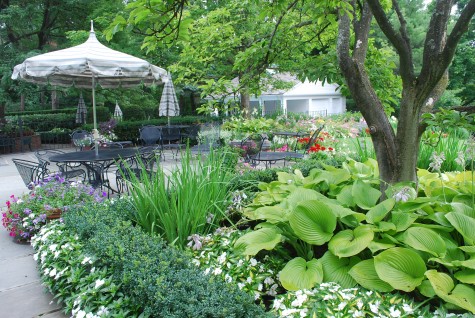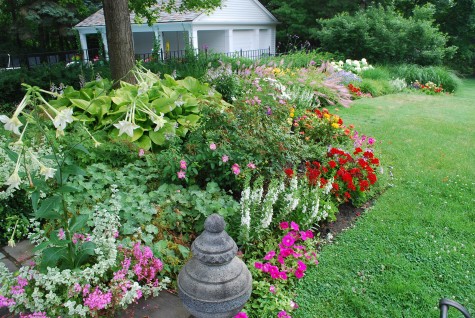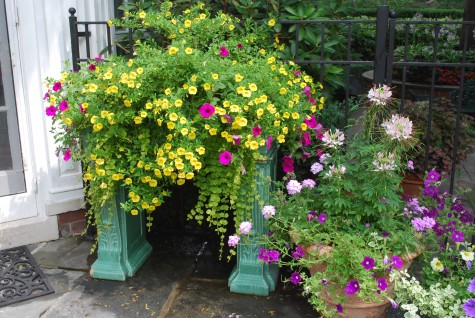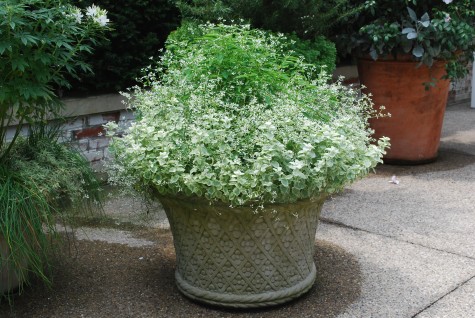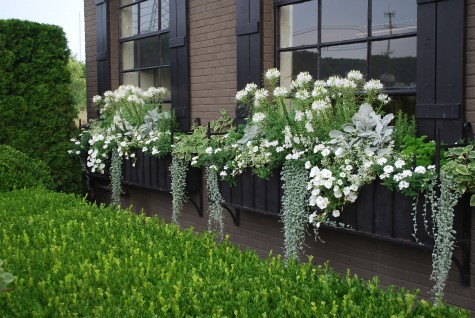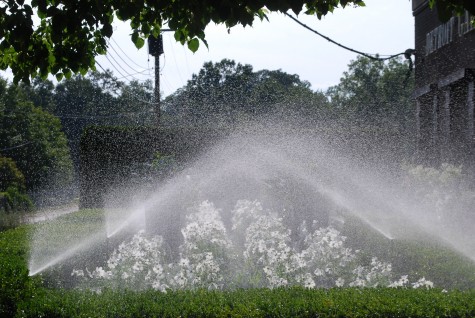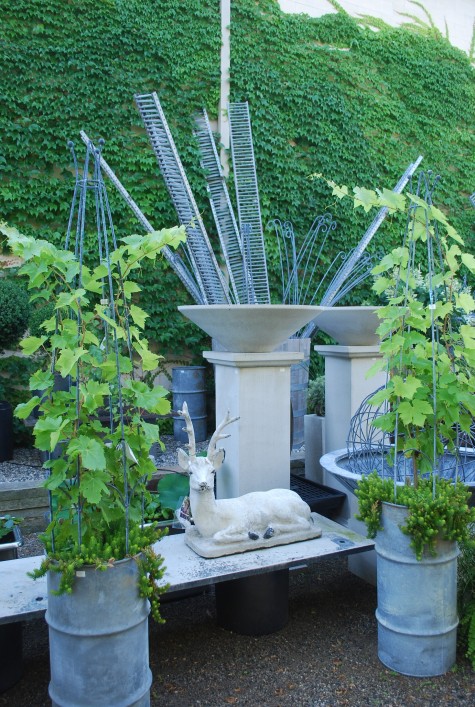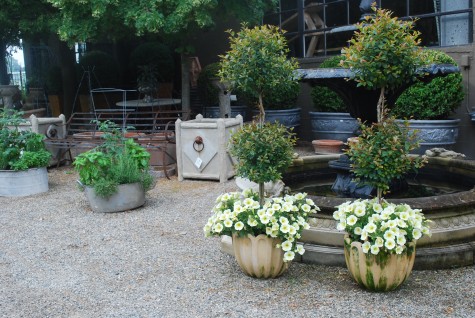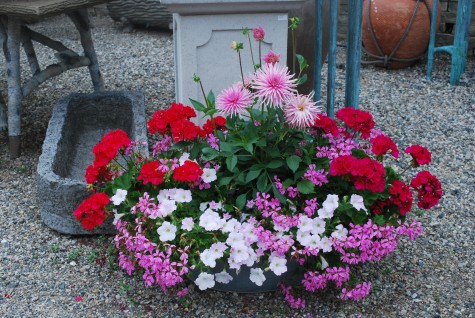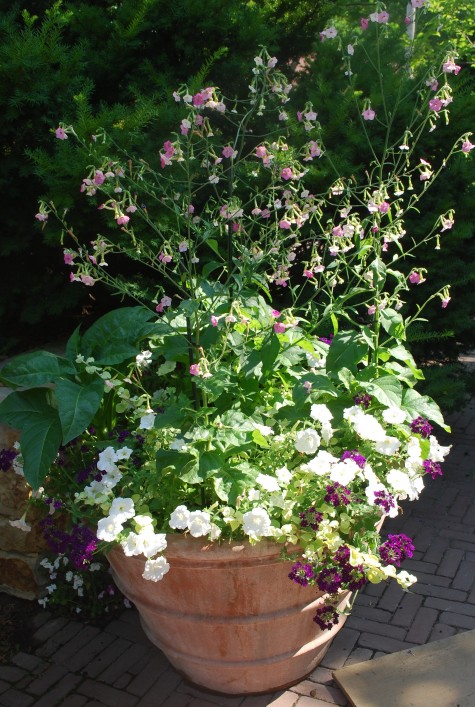 There was plenty to worry about with this year’s tour-most of the worries had to do with weather. Our extremely hot weather had been somewhat mitigated by regular and heavy rain, but that combination can also provide a forum for fungus of all descriptions. I have had some trouble keeping up with the water at my own house-but I was determined to let the chips fall where they may. I was not trying to secure a berth in the World Series of Gardening-I was trying to raise a little money for a worthy cause.
There was plenty to worry about with this year’s tour-most of the worries had to do with weather. Our extremely hot weather had been somewhat mitigated by regular and heavy rain, but that combination can also provide a forum for fungus of all descriptions. I have had some trouble keeping up with the water at my own house-but I was determined to let the chips fall where they may. I was not trying to secure a berth in the World Series of Gardening-I was trying to raise a little money for a worthy cause.
 Only a few days a year are the garden gates wide open; this is nice to see. What I see when I leave home in the morning, and what I drive up to at night-I have taken a lot of trouble to design this space. I see it every day, twice a day. This day was mostly overcast. Overcast days make the color of these Sum and Substance hostas seem especially intense; they so light up a shady spot. Light and dark, contrasting textures, a coherent view-these are things I am interested in as a designer. As a gardener, I have the patience to let a garden evolve.
Only a few days a year are the garden gates wide open; this is nice to see. What I see when I leave home in the morning, and what I drive up to at night-I have taken a lot of trouble to design this space. I see it every day, twice a day. This day was mostly overcast. Overcast days make the color of these Sum and Substance hostas seem especially intense; they so light up a shady spot. Light and dark, contrasting textures, a coherent view-these are things I am interested in as a designer. As a gardener, I have the patience to let a garden evolve.
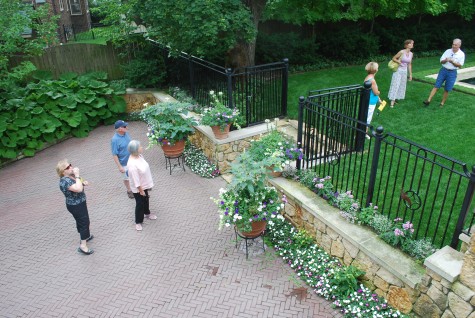 I grow lots of flowers at the end of my drive- as this is what I want to see when I drive up. It softens the iron of the fence, and gates. From the street, the fence, and these pots and the in ground plantings comprise the midground space of my view. I always find the midground space the hardest to deal with-near and far seems so much easier to resolve.
I grow lots of flowers at the end of my drive- as this is what I want to see when I drive up. It softens the iron of the fence, and gates. From the street, the fence, and these pots and the in ground plantings comprise the midground space of my view. I always find the midground space the hardest to deal with-near and far seems so much easier to resolve.
 My driveway ends is a large piazza-like space. It is interesting to see how people proceed from this point. How that driveway unexpectedly enlarges makes it the center of my landscape, from which all other possible paths radiate. Some went up the path to the north side garden. Some came into the pool yard first. Some lingered in this space, considering their decision about how to proceed. Watching how people use a space tells you a lot about how successfully you have planned it.
My driveway ends is a large piazza-like space. It is interesting to see how people proceed from this point. How that driveway unexpectedly enlarges makes it the center of my landscape, from which all other possible paths radiate. Some went up the path to the north side garden. Some came into the pool yard first. Some lingered in this space, considering their decision about how to proceed. Watching how people use a space tells you a lot about how successfully you have planned it.
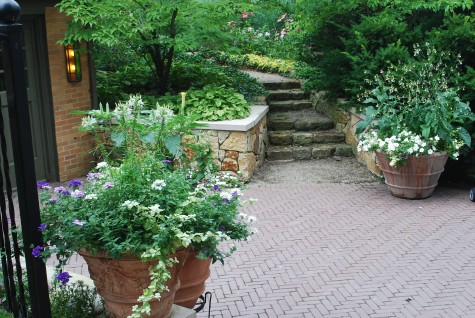 My north side garden is a very small space; there is not even that much to see. The main attraction is from the ground level. How the path curves out of immediate view invites a visitor to explore. I almost never use this path. It is enough for me, that it makes a visual invitation. I have been thinking I should place something up there to make the walk worth the trouble. But for now, the mystery of where this path might lead is enough.
My north side garden is a very small space; there is not even that much to see. The main attraction is from the ground level. How the path curves out of immediate view invites a visitor to explore. I almost never use this path. It is enough for me, that it makes a visual invitation. I have been thinking I should place something up there to make the walk worth the trouble. But for now, the mystery of where this path might lead is enough.
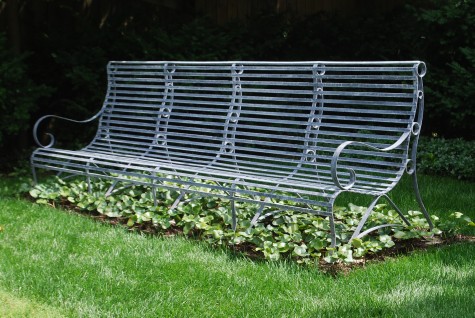 I have tried several different plants under this bench. The space needs to be planted with something other than grass,, as this 9 foot bench is very heavy, and too much trouble to move. Grass would be very unhappy with the shade cast by the bench. The European ginger seems to be quite happy here. The shiny leaves are a beautiful contrast to the cool bluish steel. The bench is set on several courses of brick, so it does not sink into the ground. Raising this bed to the level of the pool coping makes the bench at a much more comfortable height for me to sit.
I have tried several different plants under this bench. The space needs to be planted with something other than grass,, as this 9 foot bench is very heavy, and too much trouble to move. Grass would be very unhappy with the shade cast by the bench. The European ginger seems to be quite happy here. The shiny leaves are a beautiful contrast to the cool bluish steel. The bench is set on several courses of brick, so it does not sink into the ground. Raising this bed to the level of the pool coping makes the bench at a much more comfortable height for me to sit.
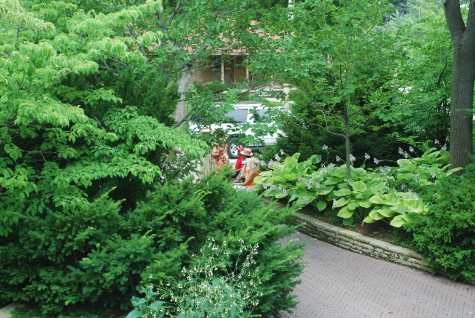 When I bought my house, the beds sloped down to the drive. There was always dirt and debris sliding out of the bed and onto the brick surface-a messy look. A low dry laid retaining wall of sandstone cleaned up the mess. It also made it easier to water my magnolias; a flat space under trees helps keep water from draining off before it can be absorbed. It also provides a perch, either to visitors, or to me, when I want to spend some time there. I was pleased to see that wall being used by guests.
When I bought my house, the beds sloped down to the drive. There was always dirt and debris sliding out of the bed and onto the brick surface-a messy look. A low dry laid retaining wall of sandstone cleaned up the mess. It also made it easier to water my magnolias; a flat space under trees helps keep water from draining off before it can be absorbed. It also provides a perch, either to visitors, or to me, when I want to spend some time there. I was pleased to see that wall being used by guests.
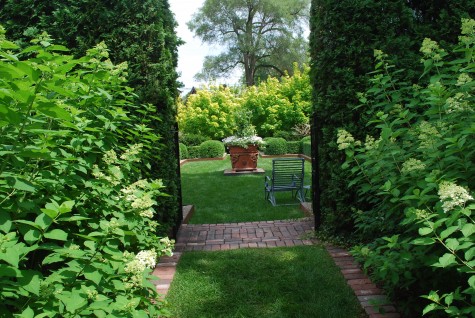 The front yard gates are only open once a year-on this day. The pool needs to be gated and locked, for safety reasons. The view with the gates open is very pretty-this was my favorite spot in the yard yesterday. As the rose garden is a sunken garden, the generous landing of old brick provides ample notice that there is a change of grade. The brick on the sides of the path neaten up a space adjacent to the hydrangeas, where grass is reluctant to grow. I like the simplicity of the brick, rather than introducing another plant.
The front yard gates are only open once a year-on this day. The pool needs to be gated and locked, for safety reasons. The view with the gates open is very pretty-this was my favorite spot in the yard yesterday. As the rose garden is a sunken garden, the generous landing of old brick provides ample notice that there is a change of grade. The brick on the sides of the path neaten up a space adjacent to the hydrangeas, where grass is reluctant to grow. I like the simplicity of the brick, rather than introducing another plant.
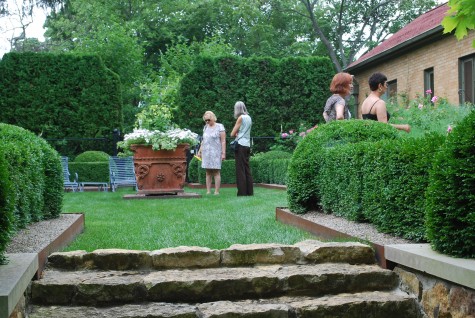 I am always keen to have visitors to the garden. They ask about things, and make comments that would never occur to me. Someone else’s point of view can help me to get moving when I feel stuck. Most gardeners are very positive in their commentary, and not at all concerned whether their advice gets taken to heart. Some things they notice make me realize my emphasis might be misplaced, or not strong enough. If you are confident to ask others what they think, something good might just come of what you hear. If what you hear is too far afield, say thanks and move on. Good gardeners trust their instincts.
I am always keen to have visitors to the garden. They ask about things, and make comments that would never occur to me. Someone else’s point of view can help me to get moving when I feel stuck. Most gardeners are very positive in their commentary, and not at all concerned whether their advice gets taken to heart. Some things they notice make me realize my emphasis might be misplaced, or not strong enough. If you are confident to ask others what they think, something good might just come of what you hear. If what you hear is too far afield, say thanks and move on. Good gardeners trust their instincts.

My neighbors, Fred and Jean, will be moving back to England this fall. This is their third year, tending the tour for me. They always come round before the tour to go over the new plants, the old plants, what flowers are in the pots. They like to be able to answer questions, just like me. They attended horticulture school in England many years ago. I trust my garden to them. We all talked gardening yesterday until we had not one word left. I am quite sure we are just like other gardeners, in other states, and other countries-all over this planet. This part I really like.






